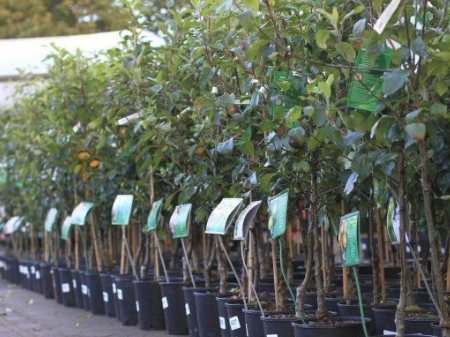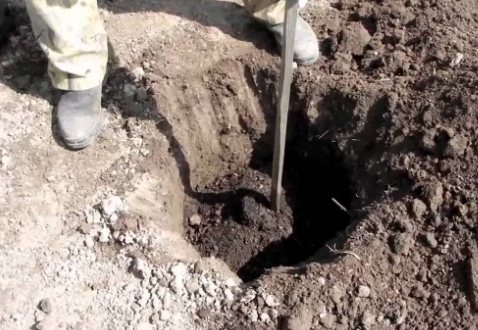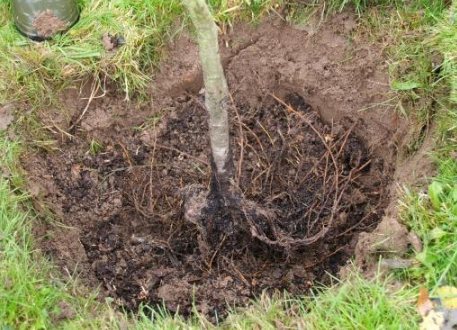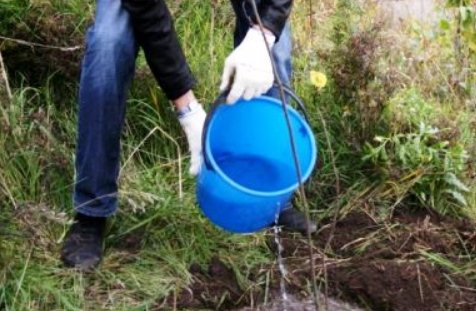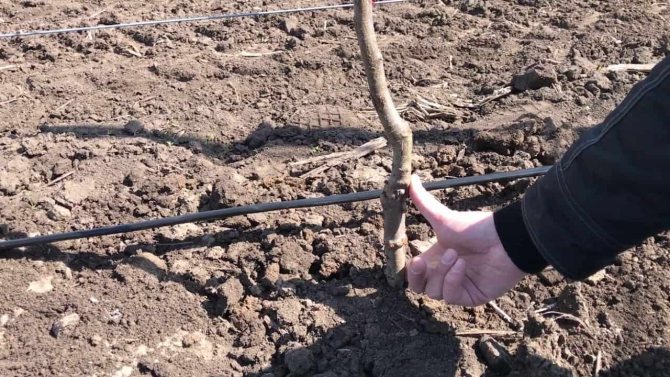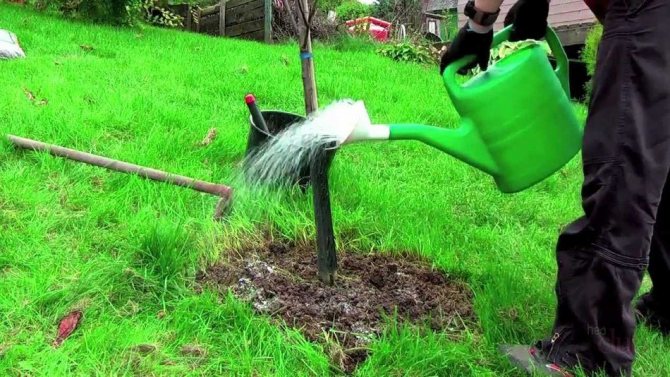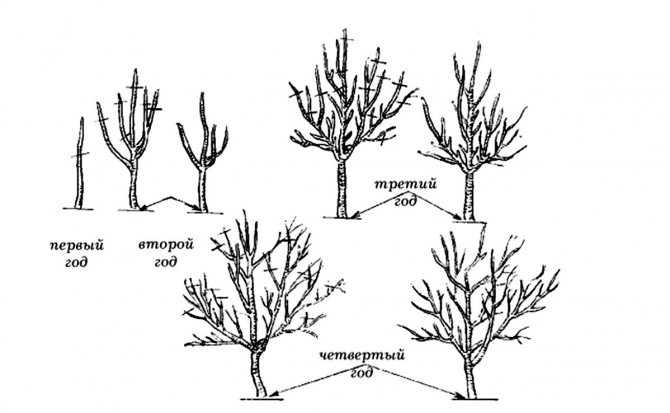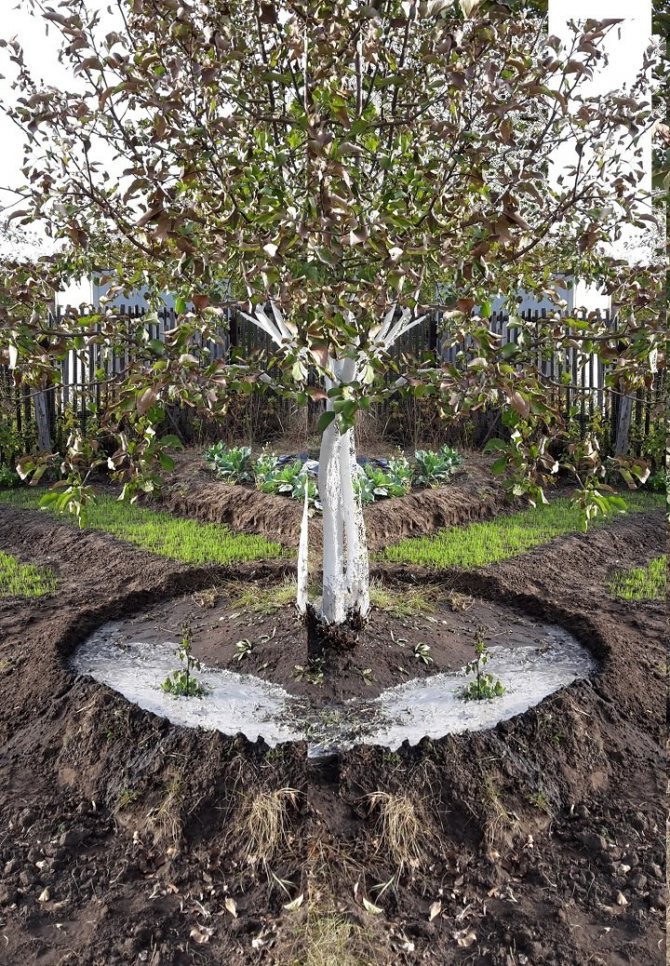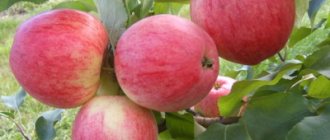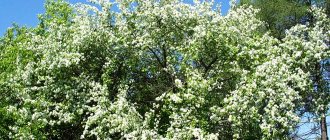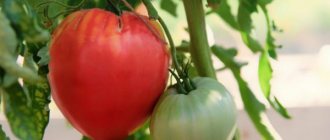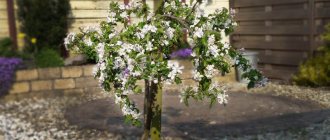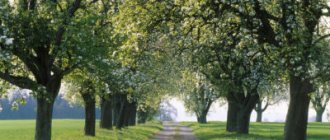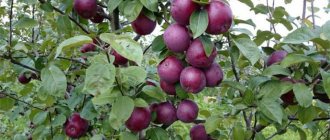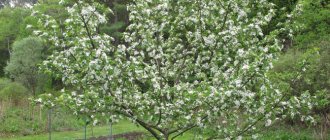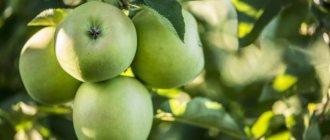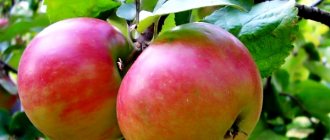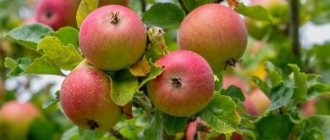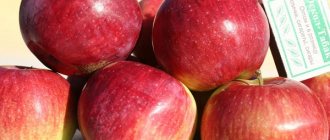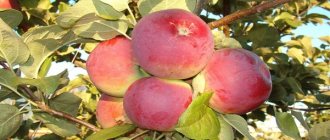The Welsey apple tree appeared in the 19th century thanks to the efforts of the American breeder M. Gideon. He strove to get a variety that would grow well in the north. For a long time he was beset by failures, but the American bought more seeds with his last money and tried one last time. Only one seed, the progenitor of which was the Siberian cherry apple tree, brought the long-awaited success.
The new species came to Russia in the same 19th century and immediately gained recognition from gardeners for juicy sweet fruits, attractive appearance and winter hardiness. Having mastered a new place, Welsey received other names: Tartu rose, Harvest, Tarut pink, Abundant. Today, culture is taking root well in many Russian regions: in the Leningrad Region and the Moscow Region, in Siberia and the Altai Territory. Also, residents of the southern latitudes, who decided to plant Welsey, can expect a good harvest.
The variety has a creeping subspecies, which is also early winter. He brings a crop in the 6th year of 12 kg per season. The creeping tree is usually medium-sized, with small, dark green leaves. Apples are flat-round or conical in shape. Green in color with a blush on the side. One apple weighs from 90 to 120 g. The harvest takes place in the second half of September. Shelf life 3-4 months.
For your information! Welsey is the mother of 30 new apple trees. The most famous among them are Aelita and Prima.
The history of the creation of the variety
This variety was obtained in the 18th century as a seedling from free pollination of an unknown variety in the United States. The plant got to Russia only by the end of the 19th century, but it took root there. At the moment, it is grown both in amateur plots and on an industrial scale. On the basis of Welsey, about 40 new varieties of apple trees were obtained with excellent characteristics.
The variety was entered into the State Register of the Russian Federation in 1947.
Other names of the variety are “Izobilnoe”, “Urozhainoe”, “Fertile”, “Tartu Rose”, “Tartu Rose”.
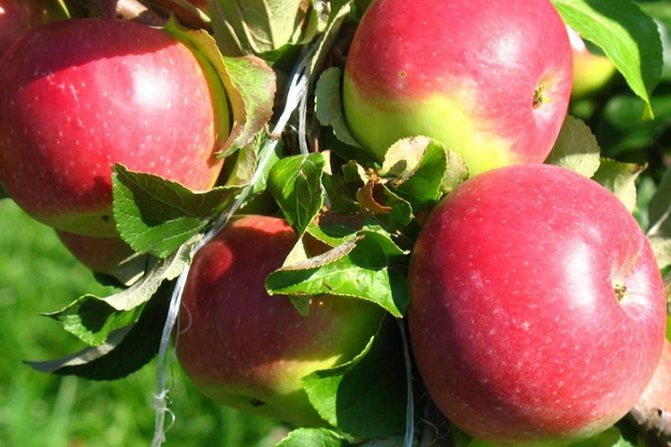
Subspecies and variants
On the basis of this variety, many famous apple trees have been bred. Among them: Aelita, Prima, Bezhin meadow, etc. (all - more than thirty). Possible cultivation options: on seed stock, semi-dwarf, dwarf, columnar.
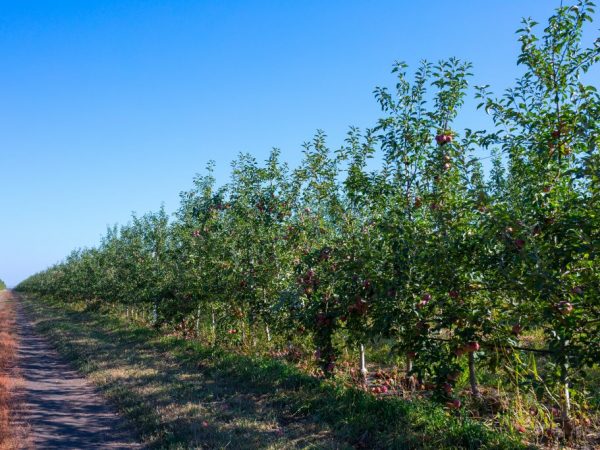

The variety is not suitable for growing in the north.
Wellsie's creeping form is especially popular. It is obtained as a result of special shaping, bending the branches to the ground and securing them. Stanets are characterized by increased winter hardiness, due to which it is often grown in southern Siberia.
Main characteristics
Wellsie trees are of medium height and grow rapidly to their maximum limits. Skeletal branches extend from the trunk at an acute angle. The natural shape of the crown is slightly raised, looks like a wide and dense pyramid, but gradually it rounds out and spreads out due to the weight of the crop.
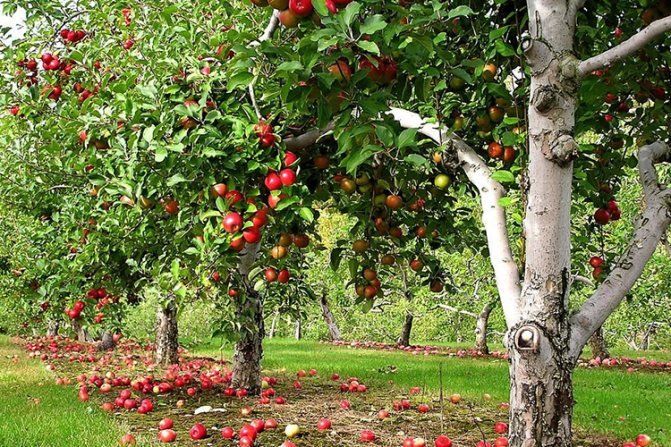

Fruiting of an apple tree is mixed - the fruits are tied on generative formations of all types, as well as on the tips of vegetative branches.
Flowering usually occurs in May, while the flowers themselves are moderate in size, they are painted in a light pink tint. The petals are very close to each other. Kidney awakening is not bad.
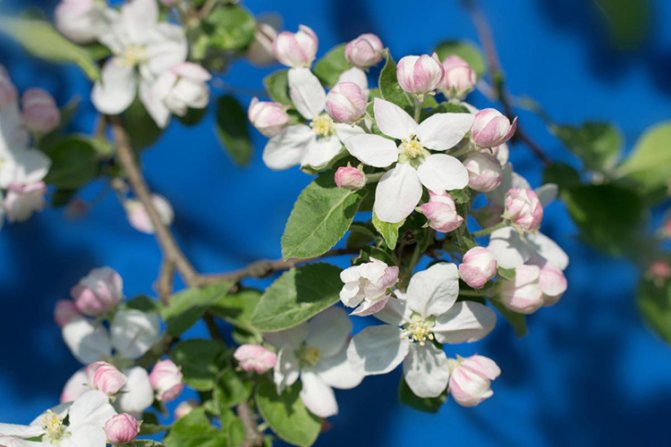

The leaves are dark green, glossy, moderate or small in size, wavy at the edges.
Winter hardiness is relatively high, for example, a tree can survive frosts down to -25 degrees. If the temperature is lower, the apple tree may be damaged. In the northern regions, it is more logical to grow a crop on a winter-hardy rootstock. When it comes to drought tolerance, it is moderate. When there is no rain at all in summer, you will have to regularly water the crop.
Life expectancy is short - from 20 to 40 years.
The variety was most widely spread in the European part of Russia, Belarus and the Baltic states.
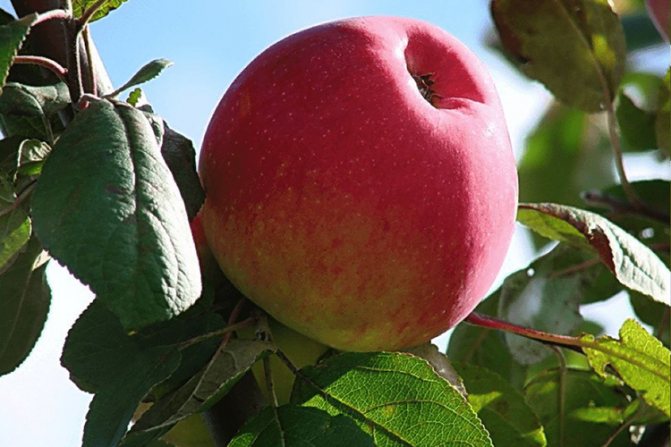

Plant in a prepared hole
| Stage 1. Choose a quality seedling Purchase a tree from a nursery or a specialized outlet... Avoid markets and street vendors, as they often do not sell the best options. Choose planting material by appearance... The branches must be healthy, the roots are thick and spreading |
| Stage 2. Choose the landing site correctly Find a place well lit by the sun... The distance to the fence is at least 2 meters. There must be 4 meters or more to buildings and neighboring trees. Dig a hole under a tree... Make a depth of at least 60 cm, the diameter is about the same |
| Step 3. Introduce the nutrient mixture into the planting pit Take humus and mix with wood ash in a 10: 1 ratio... You can add 150 g of complex fertilizer for fruit trees. Introduce 2-3 buckets into the pit... Level the surface well and spill with water |
| Step 4. Plant a tree Place the seedling in the hole and smooth the roots over the surface... Make sure the root collar is above ground level. Fill the hole with soil... Tamp the surface well. Make a recess around the trunk or fill in a side to prevent the water from spreading |
| Step 5. Water the seedling abundantly Pour at least 2 buckets of water immediately after watering... If it is absorbed very quickly, then it is better to add more. Water the tree every week for a month |
Description of fruits
Fruits are small, reaching a maximum weight of 130 grams. Their shape is slightly flattened, round. The peel of apples is thin, has a green-yellow color and a bright raspberry blush. The pulp is white, a slight admixture of green is permissible. The fruit tastes sweet, with sour notes, incredibly juicy and crunchy.
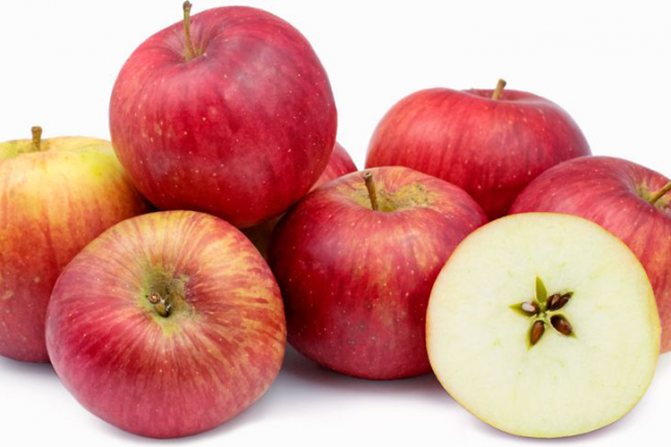

The more Wellsie yields a crop, the smaller the fruit will be.
Tasting taste assessment - 4.6 points out of 5. Experts note the delicate pineapple aroma of the fruit.
Presentation and basic characteristics can be preserved during transportation even over long distances. The storage period is from October to January. At the same time, gardeners say that if the apples lie down for a couple of months, then the taste becomes more pronounced.
It is recommended to store apples in a cellar or basement, with sufficient humidity and temperatures from +1 to -1. For this, cardboard boxes or boxes are usually used, in which the fruits are laid in layers, laying with paper or dry sawdust.
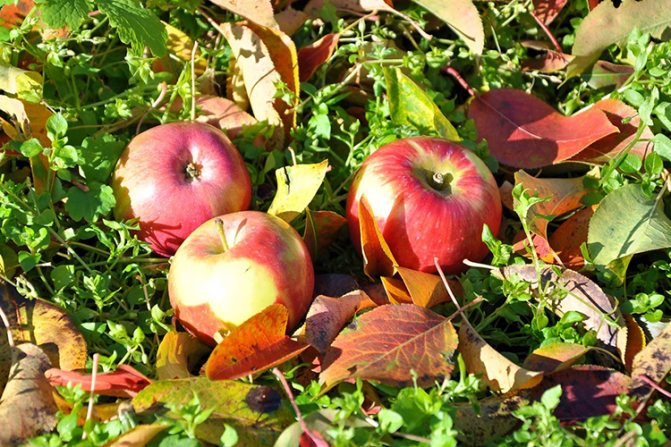

The crop is suitable for fresh consumption, but also good juices or compotes are obtained from it. Some make marmalades or jams from Wellsey apples. They are also good in salads or baked goods. The pleasant sour taste makes anything unusual.
Apple tree Welsey and its description
According to the botanical classification, the Welsey varietal apple is a medium-sized fruit crop (Figure 1).
Note: The height of an adult tree is 2-4 meters, which greatly simplifies crop care and harvesting.
When choosing a plant for a garden, other characteristics of the variety description are also taken into account:
- Crown width: during the period of active fruiting, Welsey grows quite strongly. The crown diameter can reach two meters, although in most cases it stops at around one and a half meters.
- Productivity: the American variety is very productive.Up to 200 kg of fruit can be harvested from one tree, and the weight of one apple reaches 150 grams.
- Self-fertility: an important characteristic affecting the quantity and quality of the crop. Because Welsey is self-fertile, the amount of fruit is independent of the presence of pollinator plants, insects, or weather conditions.
- Taste qualities: fruits have a delicate fruity aroma and have a pleasant sweet and sour taste.
- Winter hardiness: Welsey is considered to be moderately cold resistant. It can easily endure a temperature drop down to -25 degrees. Lower temperatures can damage young shoots.


Figure 1. The Wellsey cultivar is considered one of the oldest
In addition, many gardeners take into account the disease resistance of a particular cultivar. The Welsey hybrid is scab resistant, but if not properly maintained, the tree can become infected with powdery mildew, fruit rot, and cytosporosis.
Pollinating trees
To get a large harvest, it is advisable to plant other varieties of apple trees near Wells. The following are the best:
- Antonovka;
- Autumn striped;
- Mac;
- Borovinka.
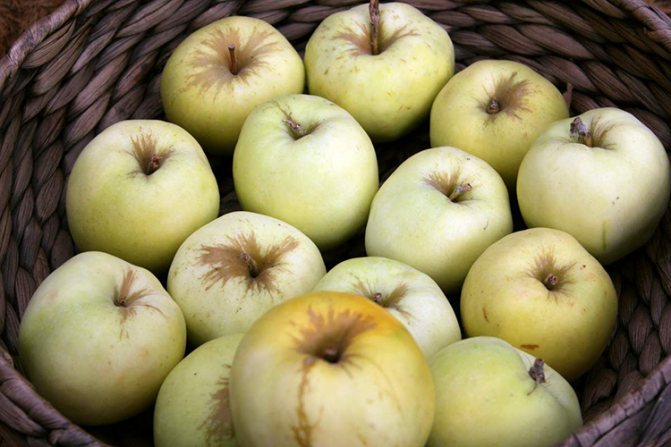

Antonovka
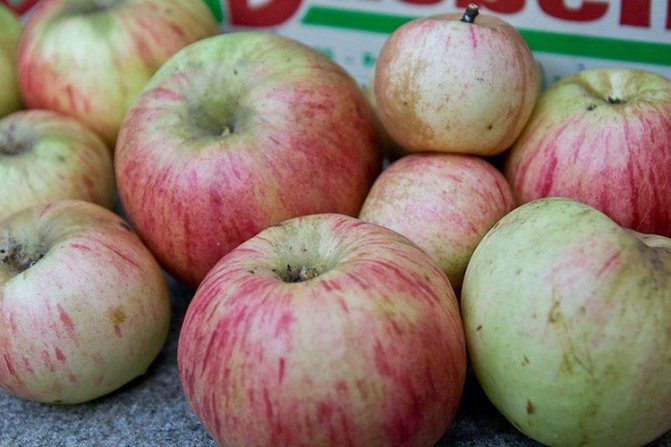

Autumn striped
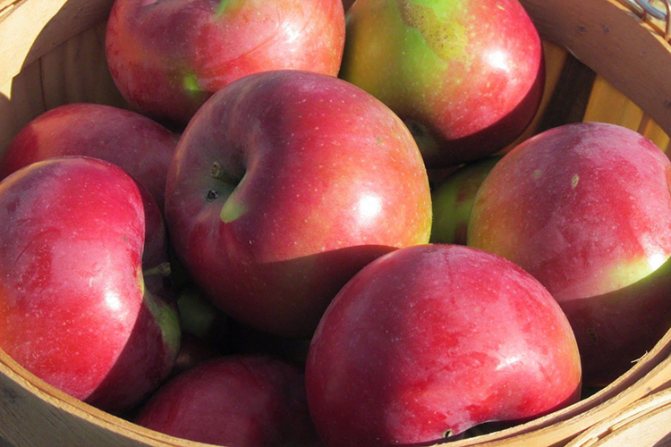

Mac
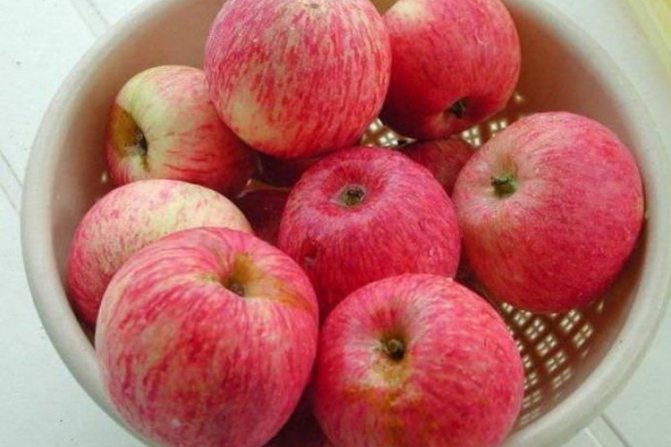

Borovinka
Yield
The Welsea apple variety usually produces good yields. Fruiting occurs about 4 years after planting, while the volumes are about 250 kilograms. The record recorded figure is about 260 kilograms. It is worth noting that fruiting occurs after a year, and the ripening of the fruits is uneven. Harvest in two approaches - in early September and early October.
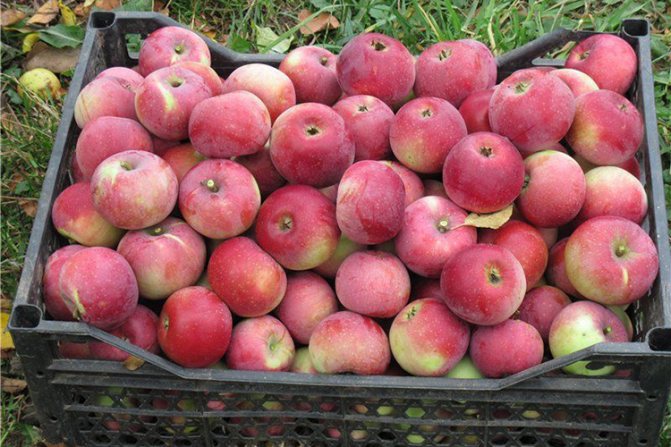

Harvesting
The fruits usually begin to be harvested from the tree in September, but depending on the type of climate, harvesting may take place in October as well. You should be careful, because the distinctive properties of apples are the unreliability of fastening. With a sufficient amount of volunteers, it's time to remove the apples.
When removing, you need to be careful and slightly turn the fruit. Then the apple will be in the hand quickly, without damage and with a stalk. The crop can be stored until the end of winter, the last fruits can be taken out of the bins in February. The right conditions must be observed: sufficient humidity and low temperatures.
Diseases and pests
In general, the apple tree resists scab well, but it is afraid of other diseases: for example, powdery mildew or cytosporosis. Treatment methods are universal: pruning and disposal of injured branches, as well as treatment with drugs.
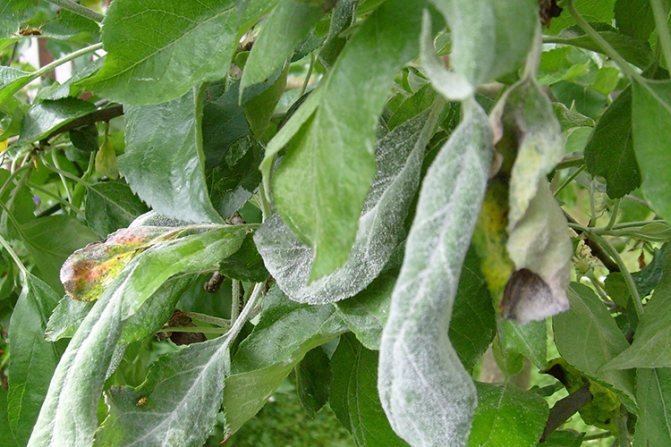

Powdery mildew
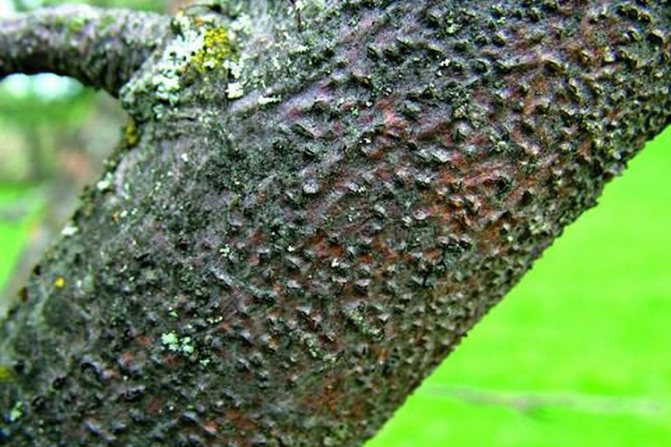

Cytosporosis
As for pests, Welsey is most often affected by the hawthorn and moth, scale insect and flower beetle. To get rid of them, it is recommended to dispose of fallen leaves in the fall, to weed and loosen near the trunk and to do treatment with insecticides - for example, "Nitrafen", "Zolon", "Cydial", "Karbofos".
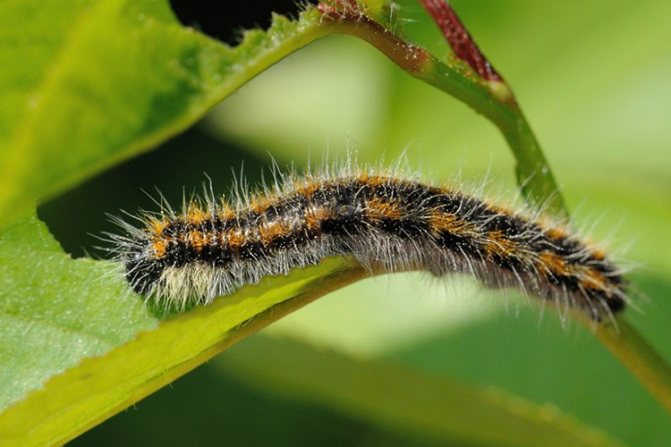

Hawthorn
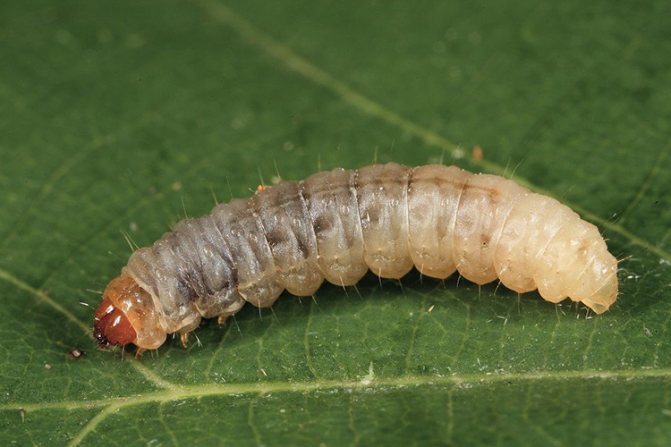

Apple moth
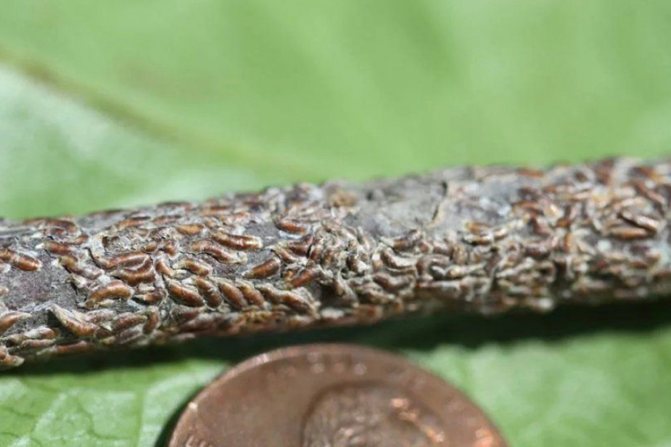

Shield
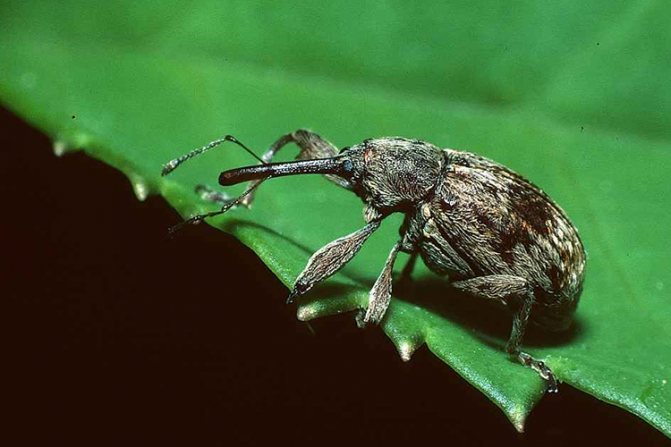

Apple blossom beetle
Advantages and disadvantages
Consider the positive aspects described by gardeners:
- good harvest;
- great taste;
- apples tolerate transportation without losing their presentation;
- the crop is stored for a long time;
- the apple tree is not afraid of scab.
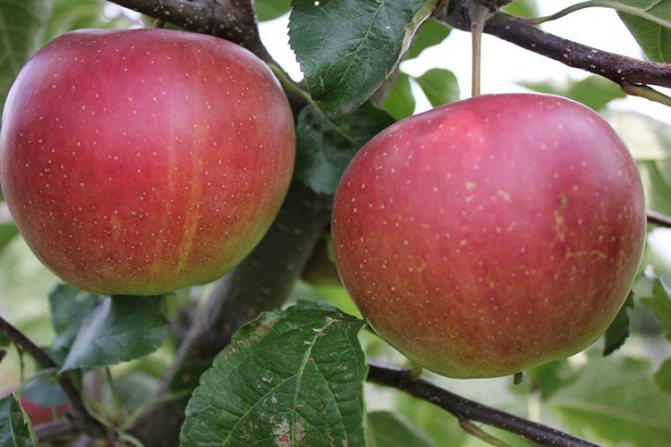

Of course, there are negative aspects that are very important to take into account before planting this plant in your area:
- not the highest resistance to winter frosts;
- pollinators are needed;
- the taste and aroma of fruits are fundamentally dependent on the weather and climate: if the season was cool and with frequent rains, the taste becomes watery;
- sometimes the crop can crumble if ripe;
- the variety is afraid of many pests;
- when the harvest is plentiful, the fruits become smaller.
Landing
In general, planting a Wellsey apple tree is no different from planting other varieties. It is best to plant young seedlings in autumn or spring, and in the latter case, stronger rooting occurs.
As for the location, it must be borne in mind that there should not be groundwater nearby, as this provokes rotting. The soil itself should not be clayey or sandy, as this injures the root system. The site should be well lit by the sun and protected from the wind.
The soil must be of very high quality, water and air permeable. Before planting, it is advisable to moisten the roots of a young tree in an insecticide to save it from parasites.
Planting process step by step
During planting, it is very important to ensure that the tree is not deeply buried in the soil. The neck should be 7 centimeters from the ground. Now let's look at the process step by step:
- Form a landing pit, the depth of which is about 90 centimeters, and the width is about 60.
- Form a small slide at the bottom of the hole. Place a seedling there.
- Fill the pit with a mixture of superphosphate, wood ash and compost.
- Trample the soil thoroughly.
- Insert a couple of stakes along the edges of the pit and tie a young apple tree to them.
- Water the ground thoroughly.
Agrotechnics
Apple-tree Dessertnoe Isaeva
Spring is the best time to plant Welsea. And this must be done before bud break. The place for the apple tree is chosen even, where water does not stagnate. Groundwater should run at a depth of 2 m from the surface of the earth.
The apple tree prefers floodplain soil, black soil. It will take root in the gray forest soil.
Before planting a seedling, the soil must be fertilized with humus (5-6 kg per hole), wood ash or manure. Usually, the hole is dug a week before planting. A depth of 60-65 cm and a width of 80 cm is enough. Then everything is carried out in a standard way: the seedling is placed on a nutrient mixture, pre-moistened (2-3 buckets of water), the roots are straightened and sprinkled with earth. After that, watering is carried out again and the soil is compacted. The main thing is to prevent the appearance of voids among the roots. In this case, mulching with humus will help. Be sure to make a support for the tree after planting.
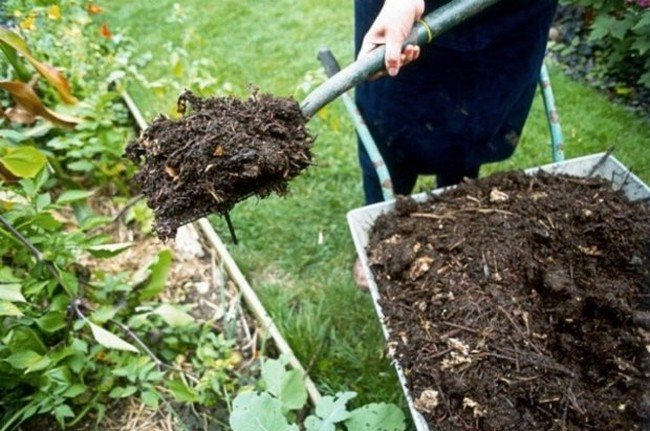

Mulching
Follow-up care of the Welsey apple tree consists of removing weeds near the trunk, mulching, loosening the soil, watering, applying top dressing and pruning. You need to loosen the soil every 25-30 days. Watering is carried out in dry weather, when the shoots are gaining strength and are actively growing, during periods of flowering and fruit ovary. Fertilization is best done in spring. For this period, nitroammophoska is suitable (1 tbsp. Spoon under each apple tree), and with the beginning of flowering - potassium salt and superphosphate (15-20 g each). In the fall, sprinkle the near-trunk area with wood ash (500 g for each tree). Organic fertilizers are used every few years.
When the Wales apple tree begins to bear fruit, the main thing is not to miss the moment, as the ripe apples begin to crumble. Care should be taken when removing fruits, since broken fruits are not long-term in storage.
For your information! An adult apple tree can bring up to 200 kg of apples per season, but if the year was extremely rich in harvest, then next season Welsey will rest and gain strength.
Care
It is very important to organize systematic watering, loosening and fertilization for the apple tree in the first year. If the summer is very dry, it is recommended to water the plant once a week, preferably in the evening. Water the tree from above, thereby washing the branches. Loosening is done after watering or rain, and they do it carefully so as not to harm the roots.
In the future, watering is carried out once every 10 days, if there is no rain.
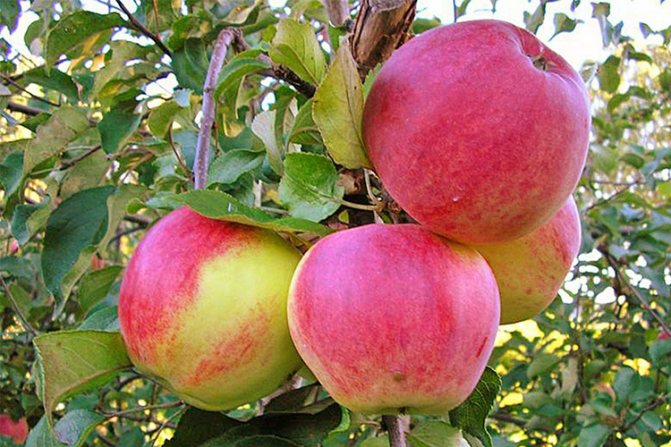

For the winter, the plant is advised to be insulated. Spruce branches or burlap are great for this. The trunk circle will need to be well mulched.
In addition, the plant needs regular treatment from pests using standard methods for a given crop.
How to transplant an apple tree to another place
When transplanting an apple tree to a new place, the pit is prepared in the same way as when planting seedlings. It is much more important to comply with the deadlines:
- It is best to carry out the procedure in the spring, so that there is time for the adaptation of the root system.
- The transplant is carried out before the start of sap flow - in March.
- In the southern regions, it can be planted in autumn in November, when the sap flow stops, after removing all the leaves.
- The transplant is carried out with a lump of earth. Its dimensions should be about 1 m in diameter.
- First, separate the borders with a shovel, then pour water on the near-trunk circle to soften the earth. Use the lever to pull out the tree.
- After planting, the seedling is spilled abundantly with water.
- The roots and crown of the transplanted tree are pruned so that more energy is spent on the formation of a new root system.
The transplant can be done for 3.5 and 10 year old plants. Welsey is not transplanted over the age of 20. The apple tree is too big, it will not be able to adapt to a new place.
Pruning
Pruning is carried out annually. This is done in order to increase the yield and keep the branches from breaking off, as they suffer greatly from the weight of the apples. Formative pruning is done in the first year. As the apple tree matures, it is recommended to do anti-aging pruning once every couple of years.
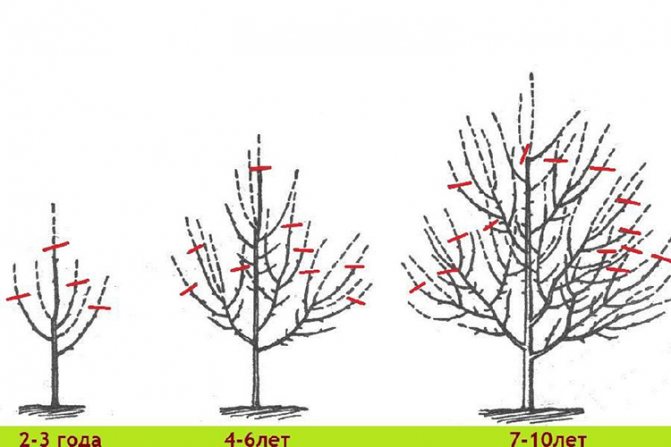

They are also removed or transformed into overgrown strong branches that have no room to grow. After trimming, all cut material is best burned.
What if the apple tree does not bloom or bear fruit?
A healthy-looking crop may not flower or bear fruit for the following reasons:
- The plant is still too young.
- Incorrect pruning, during which the fruit buds are removed.
- The seedling was planted incorrectly: in the shade, close to groundwater, in a draft, so it is not comfortable.
- No pollination, you forgot to plant pollinators.
- The plant is attacked by the flower beetle.
- Iron deficiency in the soil.
Analyze the growing conditions: what conditions are needed for full development, and what you have provided. Abolish nitrogen-containing fertilizers for plants older than 2 years, namely, do not feed the trees with compost, manure, do not even mulch with grass and tops. Better replace it with phosphorus and potash fertilizers.
Further, it is worth stopping pruning for a couple of years in order to enable the formation of shoots with fruit buds. Examine the plant carefully for pests. Hang up the trapping belts. Finally, spray with copper sulfate in the spring to compensate for the lack of iron in the soil.
Testimonials
Natalia, Voronezh: I have been growing apple trees for a long time, and I have a lot of different varieties on my site. Wellsey planted relatively recently, but I like the variety. I note that this apple tree gives me the most harvest, although it is sharply periodic. Taste characteristics of fruits at altitude are sweet with a slight sourness. It is best to eat them fresh, for processing I don't really like them. Great for sale.
Valentina, Kursk: Once a neighbor treated me to small, tasty and slightly sour apples. Asked what sort - it turned out, Welsey. I went to the nearest nursery and there I bought myself some seedlings. Several years have passed, and yesterday I gathered the first harvest. The fruits are magnificent - optimal in size for me, the taste is delicate and rich, with a little acid. I will try to cook juice from apples, since there are a lot of them, I myself cannot cope with eating so many.
Nikolay, Noginsk: I like the variety. I grow it mainly for sale. I want to note that, despite the frequency, the harvest is always large, and I am satisfied with it. The older the tree, the more apples it gives, however, when there are a lot of them, the fruits become smaller. Last time I got more than 200 kilograms from a tree. I will give a simple advice to gardeners: if your trees break under the weight of the harvest, put up special supports. By the way, the most delicious apples grow along the borders of the crown, but on the inside they are small and much more sour. But I just like this acid. Great apple tree!
Tatiana, Tula: Wellsey trees were planted by my parents.The apple tree is harvested in early September, and the fruiting process continues until October. We eat most of the harvest fresh, we put the remains away for storage - it lies perfectly almost all winter. Long-term transportation of the fruits is excellent. The plant is unpretentious in care, I like that I can not sit for hours on the site. The only problem is pests periodically attacking the apple tree.

